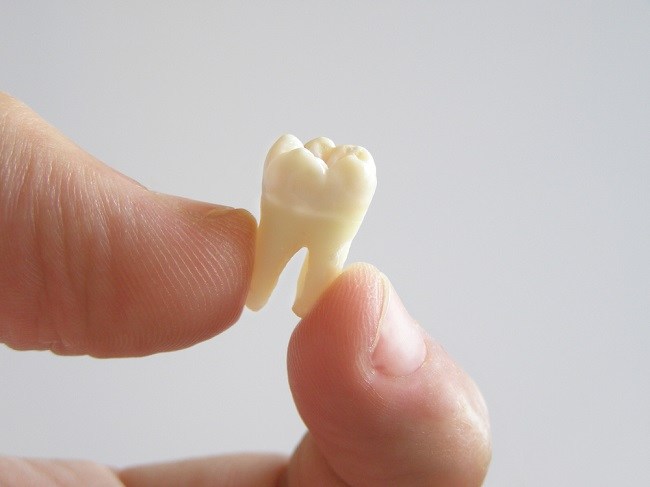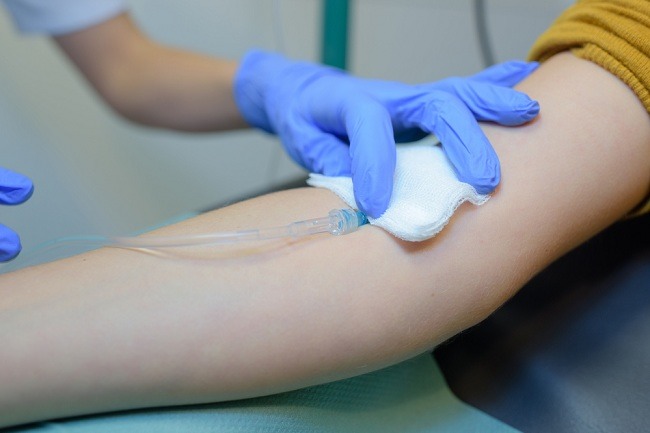Lower gastrointestinal bleeding is characterized by the appearance of blood in the stool. There are various types of diseases that can cause this condition. Although it looks terrible, blood in the stool is not necessarily something that is life threatening.
In general, the human digestive tract is divided into 2 parts, namely the upper and lower. The upper gastrointestinal tract includes the mouth, esophagus, stomach, and small intestine, while the lower gastrointestinal tract extends from the large intestine to the anus.

There are various diseases that can cause lower gastrointestinal bleeding. The appearance of blood in each disease is different. There is blood that is fresh red in color, some is mixed with feces and is dark in color.
Causes of Lower Gastrointestinal Bleeding
Here are some diseases that can cause lower gastrointestinal bleeding:
1. Hemorrhoids
Hemorrhoids, also known as hemorrhoids or hemorrhoids, are swollen blood vessels around the anus. Diseases that make bowel movements painful are the most common cause of lower gastrointestinal bleeding.
Swelling of blood vessels initially just a lump in the anus. New bleeding occurs when the blood vessels that make up this lump burst, usually due to increased pressure on these blood vessels, for example when straining during a bowel movement.
Blood usually drips after the stool comes out and is fresh red in color. Hemorrhoids should not be allowed to drag on because it can cause serious complications such as anemia or pain that is so severe that it requires surgery.
2. Anal fissure
Anal fissures are small cuts or tears in the inner wall of the anus that are marked by sharp pain when defecating. This condition is usually caused by large or hard stools due to constipation. Just like hemorrhoids, bleeding in the anal fissure drips after the stool comes out and is fresh red in color.
There is no specific treatment for anal fissures. These anal sores will usually heal on their own within a few days, especially when accompanied by high-fiber foods and at least 8 glasses of fluid intake per day.
3. Intestinal infection
Intestinal infections usually cause diarrhea. Of the many germs that cause diarrhea, there are some bacteria and parasites that can cause damage to intestinal tissue. One of them is bacteria Shigella dysenteriae cause of dysentery.
Damage to intestinal tissue in this infection causes diarrhea mixed with blood and mucus. Usually, the blood is fresh red in color. In addition, symptoms that occur can include abdominal pain, fever, and vomiting.
Unlike ordinary diarrhea, this condition needs to be treated with antibiotics. If left unchecked, intestinal tissue damage can get worse, causing the large intestine to perforate and bacteria to spread into the abdominal cavity.
4. Ulcerative colitis
Ulcerative colitis is a chronic inflammation that causes ulceration and bleeding in the lower gastrointestinal tract. Symptoms that occur are usually in the form of abdominal pain or heartburn, and bowel movements or diarrhea mixed with blood that is little but frequent. In addition, people with ulcerative colitis can also experience fever and weight loss.
This disease cannot be taken lightly because it can cause dangerous complications, such as heavy bleeding and severe dehydration. Injuries to the intestines can also get deeper and cause a perforated colon. In addition, this disease can also increase the risk of colon cancer.
5. Intestinal polyps
Intestinal polyps are small, stalked lumps that grow on the inner wall of the large intestine. Generally, polyps do not cause complaints. However, certain types of polyps can enlarge. The larger the polyp, the greater the risk of developing cancer.
Large polyps can cause symptoms of abdominal pain, constipation, or diarrhea that lasts more than a week, as well as lower gastrointestinal bleeding that is seen during bowel movements. The blood can be fresh red or mix with the stool and make the stool black.
6. Colon cancer
Colon cancer can also cause lower gastrointestinal bleeding. Blood is usually seen mixed with stool and can be fresh red or dark brown in color.
In addition to bleeding, cancer is usually characterized by drastic weight loss and changes in bowel patterns. In advanced stages, cancer can cause a large intestine and cancer cells to spread to other organs.
Cancer can be caused by various things. Unhealthy eating patterns and types of food, for example high in fat and low in fiber, can trigger this disease. As mentioned above, some diseases, such as ulcerative colitis and intestinal polyps, can also lead to colon cancer.
In addition to the six diseases above, there are other diseases that can also cause lower gastrointestinal bleeding, such as diverticulitis, colon vascular disorders, and Crohn's disease.
Causes of lower gastrointestinal bleeding can vary, ranging from mild to dangerous. To avoid this, a healthy and clean lifestyle is needed.
One of the most important is eating healthy foods high in fiber and adequate fluid intake at least 8 glasses of water every day so that bowel movements are smooth. Regular bowel patterns can reduce the risk of disease in the colon.
Also, although it may be disgusting, pay close attention to your stool with each bowel movement so you can notice any bleeding or changes in the color of the stool. Healthy stools are usually yellow-brown to dark brown in color.
If you notice bleeding during bowel movements, don't wait too long. Immediately consult a doctor to get an examination. The sooner the cause of bleeding is found, the lower the risk for dangerous complications.









